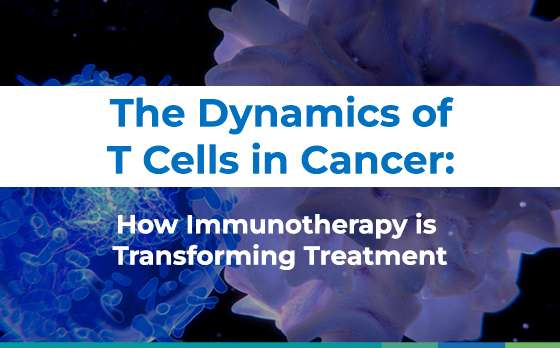Cancer treatment has evolved significantly in recent years thanks to the development of immunotherapies. These therapies harness the innate ability of the immune system, particularly T cells, to combat cancer cells. While these strategies are complex, they have transformed many patients’ lives and represent a new frontier in medicine.
The Role of T Cells in Anti-Tumor Immunity
T cells are fundamental to the body’s defense against diseases, including infections and cancer. These cells have specific receptors, known as TCRs, which recognize antigens presented by other cells as a signal that something is wrong. Under normal conditions, when a T cell recognizes an abnormal antigen (such as those from a tumor), it activates to destroy the affected cell.
However, in tumors, this process is hindered by the tumor microenvironment—a surrounding environment that can “trick” the immune system. This microenvironment limits the ability of T cells to act by promoting their exhaustion. This means that, even if T cells are present, their ability to eliminate cancer cells is compromised.
How Immunotherapy Reactivates T Cells
Immunotherapy seeks to overcome these barriers and restore T cells’ ability to fight cancer. There are several ways these therapies work:
Immune Checkpoint Blockade:
Some tumors use proteins like PD-1 and CTLA-4 to “switch off” T cells. Medications designed to block these proteins allow T cells to reactivate and attack the tumor. While effective in many cases, not all patients respond, as the immune system’s ability to fight the tumor depends on other factors, such as the diversity and functionality of the T cells present.
Adoptive T Cell Therapies (ACT):
This approach involves extracting T cells from the patient and enhancing them in the laboratory before reintroducing them into their body. A notable example is tumor-infiltrating lymphocyte (TIL) therapy. Here, T cells already within the tumor are extracted, expanded in large quantities, and reinfused into the patient after preparation that eliminates competing immune cells. This therapy is especially useful for solid tumors, such as melanoma.
Another advanced variation is CAR-T cell therapy, where T cells are genetically modified to include a specialized receptor (CAR) that allows them to identify and attack specific proteins on cancer cells. While this therapy has shown remarkable results in blood cancers, such as leukemia, it faces challenges in solid tumors due to the hostile tumor microenvironment.
Cancer Vaccines:
These vaccines are not designed to prevent disease but to train the immune system to recognize and destroy cancer cells. They are designed using specific tumor proteins (antigens) that help T cells identify and attack malignant cells.

Figure 1. The image illustrates the main immunological strategies in cancer treatment, divided into two main categories: native anti-tumor lymphocytes and adoptive anti-tumor lymphocytes. In the native lymphocytes section, tumor-infiltrating lymphocyte (TIL) therapy is highlighted, which uses T cells with specific receptors (TCR) to recognize and attack the tumor, and immune checkpoint blockade (ICB) antibodies, which block immune checkpoints like PD-L1, allowing the reactivation of T cells. In the adoptive lymphocytes category, vaccines are presented, which stimulate endogenous and adoptive T cells through antigen presentation by the major histocompatibility complex (MHC), and T cell gene therapy (CAR-T), where T cells are genetically modified to specifically target tumor cells. The figure emphasizes how these strategies converge to eliminate cancer cells within the tumor microenvironment.
What Science Tells Us About T Cells and Cancer
Recent studies have revealed that not all T cells within a tumor are the same. Some, known as “exhausted” T cells, have limited functionality due to chronic exposure to tumor antigens. However, these cells can still be reactivated under certain conditions, leading to the development of targeted therapies to revitalize them.
The use of advanced technologies, such as single-cell analysis, has allowed researchers to identify specific T cell subtypes with greater anti-tumor potential. For example, memory T cells, which can persist long-term and generate new effective cells, are a key focus of research. Additionally, tumor-specific T cells have been identified that can better adapt to the tumor microenvironment and remain active for longer.
The Impact on Cancer Patients
Immunotherapy has changed the outlook for many patients, offering options where there was once little hope. However, these therapies are not a universal solution. Treatment responses vary among patients and cancer types, highlighting the importance of ongoing research to improve efficacy and reduce side effects.
As we better understand how T cells function in the context of cancer, we are one step closer to more effective and personalized treatments. For patients, this means more options, better outcomes, and the possibility of overcoming diseases once considered untreatable.
If you have questions about these therapies or want to know if they might be right for you, consult your doctor. Each case is unique, and immunotherapy is designed to adapt to the individual needs of patients.
Main Reference:
Oliveira, G., & Wu, C. J. (2023). Dinámica y especificidades de las células T en la inmunoterapia contra el cáncer. Reseñas de la naturaleza. Cáncer, 23(5), 295–316. https://doi.org/10.1038/s41568-023-00560-y
Other References:
Sharma, P., & Allison, J. P. (2020). Dissecting the mechanisms of immune checkpoint therapy. Nature reviews. Immunology, 20(2), 75–76. https://doi.org/10.1038/s41577-020-0275-8
Restifo, N. P., Dudley, M. E., & Rosenberg, S. A. (2012). Adoptive immunotherapy for cancer: harnessing the T cell response. Nature reviews. Immunology, 12(4), 269–281. https://doi.org/10.1038/nri3191
Alcover, A., Alarcón, B., & Di Bartolo, V. (2018). Cell Biology of T Cell Receptor Expression and Regulation. Annual review of immunology, 36, 103–125. https://doi.org/10.1146/annurev-immunol-042617-053429


